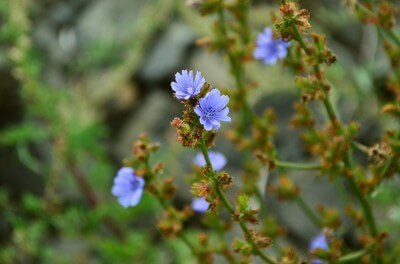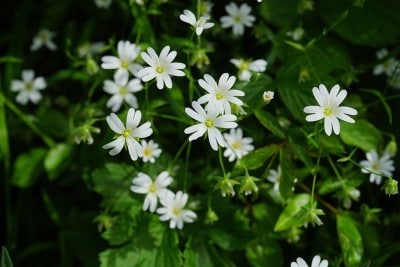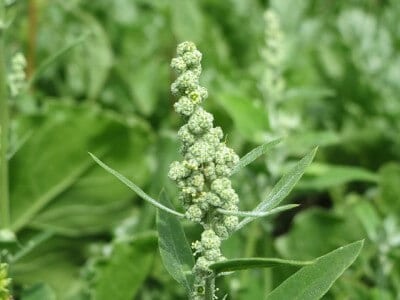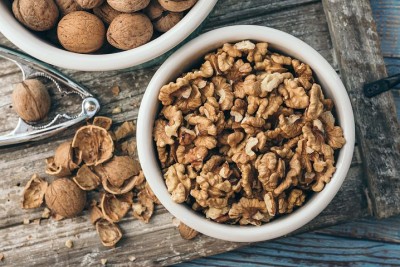Foraging in the countryside is a great way to find edible food post collapse. But what if you’re one of the unfortunate ones who is forced to survive in an urban environment? If you’ve ever wondered whether you could find food in the concrete jungle, take heart.
Urban foraging has become a whole movement and if you know what you’re looking for, there are a lot of edibles you can find in the city post collapse. Some urban foragers have created an entire database online for other foragers to use to find food.
You can use it too, simply go to Falling Fruit, put in your location (anywhere in the world) and explore the map with points indicating what types of edibles have been found, where they were found, and when they were last found.
1. Acorns
Many cities plant oak trees because they are easy to take care of. Soak acorns to remove tannins and make them edible. After acorns have been soaked, dry or cook them and grind to use as a substitute for flour.
2. Beech Nuts
Often used in cities as shade trees, you can identify beech nuts by their unique prickly covered husks. Inside the husk you’ll find 2 to 3 nuts triangular in shape, slightly bigger than sunflower seeds.
These little nuts are higher in protein than acorns and are at least half fat. Harvest just before leaves begin to change color in the fall and they’ll be a great addition to your survival diet.
3. Burdock
If you’ve ever taken a shortcut through an empty lot in the city late in the summer or early in the fall, you may remember coming out with burrs stuck to your clothing or hair. Those burrs came from the burdock plant.
If you can harvest the leaves of burdock in spring or in the early summer months, they make a great addition to your wild greens menu and can even be made into tea. Use in moderation due to medicinal properties.
4. Catbriar
Also known as bullbriar, greenbriar, horsebriar, its Latin name is Smilax. Catbriar is a prevalent plant, highly nutritious, and roots, leaves, and shoots are edible. Berries do contain seed pods that are inedible. This is a good one to look for because many people will think its a weed.
Look for a vine with tendrils and thorns. The vine part that snaps off in your fingers is edible cooked or raw and is similar to asparagus. Cook leaves similar to cooking spinach. The root is great for calories and nutrients but is very starchy.
5. Cattail
We’ve all seen the tall reed-like stalks of cattail growing in wet areas, drainage ditches, in highway medians, or near water sources. But did you know that you can eat cattail? In fact, pretty much every part of the cattail can be used for food.
The centers of the cattail roots are edible and can be cooked and eaten similar to potatoes. The pollen of a cattail can be ground and used as a substitute for flour when cooking or baking. Even the main prior to pollen forming can be roasted and eaten similar to corn.

6. Chicory
Chicory is one of the edibles you can find in the city post collapse. Look for it in empty lots or along roadsides. The roots can be brewed into a pretty passable coffee substitute. The leaves are bitter but can be used on salads.

7. Chickweed
Chickweeds, also known as starweed, satinflower, mouse ear, or tongue grass, have a strong flavor, are great for salads and pair well with dandelion. They prefer damp soil. Add chickweed leaves to sandwiches or salads or toss into stews or soups.
8. Clover
Depending on when you grew up, you may remember eating these as a child right out of your backyard. Clover is a great source of nutrients including Vitamins B2, B3, and Vitamins C and A.
Medicinally, clover can be used to relieve asthma and works well as an expectorant for cough and congestion. It also has anti-inflammatory properties that help relieve a number of different health issues.
9. Crabapples
Many people believe crabapples to be toxic to humans which is why it may be one of the edibles you can find in the city post collapse. Other people will pass it by. Crabapples are a tiny apple-like fruit that grow on a tree.
The only real difference between apples and crabapples are the size. They are edible although many are sour to taste. The best way to use crabapples is to make them into jelly or sauce.

10. Daisies
An easily recognized flower, daisies are completely edible. The flowers and leaves can be picked and eaten fresh or cooked. For gastrointestinal issues, take a page from the Austrians and make a tea from the flower petals.
11. Dandelions
Believe it or not, dandelions are one of the best edible plants you’ll find in an urban environment or anywhere else actually. The greens are a great source of fiber, and contain calcium, Vitamins A and C, beta-carotene, zinc, and iron. Dandelions are available on every continent and they are pretty easy to identify. They do well even in near drought conditions, making them a good edible for urban dwellers.
Harvest spring leaves prior to blooming for sweetest taste. Dandelion wine is best made from just opened dandelion flowers. Use closed buds of flowers in stir fry dishes. You can even pick dandelions, dip the tops in pancake batter, and then leave the stems sticking up and fry in oil.
Dandelions can be added to scrambled eggs or used to make cake. One dandelion user even claims roasted dandelion root tea cured his Crohn’s disease after 8 months of drinking several cups a day. In fall, harvest roots to dry them and then roast to make a decent substitute for coffee.
12. Garlic Mustard
In North America, this plant is categorized as an invasive species. But garlic mustard can be used to add flavor to fish, various soups, and even mashed potatoes. It contains Vitamins C and A, can help give your immune system a boost and works as a natural diuretic.

13. Goosefoot
More commonly known as lambs quarters, you’re likely to find it just growing out of a crack in the sidewalk. Harvest the leaves when they are young, prior to seeds forming and they have a sweet taste. Seeds are edible but mildly toxic so use with caution. The seeds can also be mashed and used to make a soap-like alternative.
14. Ground Ivy
Chances are you’ve seen this growing wild already in shady areas of your yard or around the city. It’s primarily used for medicinal purposes to treat health issues involving the kidneys and liver. The leaves are somewhat bitter but depending on your taste preferences it can also be used to add a bit of flavor to stews or soups.
15. Hazelnuts
These trees are easy to recognize. Look for and harvest nuts in the fall. The first nuts are typically non-fruitful and empty, but after that nuts can be picked or gathered and dried and then stored.
16. Mint
Even people who don’t forage regularly are probably familiar with mint, especially in the Midwest and Eastern United States. If you unknowingly run it over with the lawn mower, the scent of mint immediately fills the air.
Look for small white flowers clustered around the tops of thin stalks (slender mountain mint) with elliptical shaped leaves or purple flowers (bee balm) with petals that radiate out and serrated leaves. Mint has multiple uses for tea and medicines. These two species of mints often grow together in clearings or fields.
17. Pennywort
Also known as dollarweed, most gardeners will tell you this plant is impossible to get rid of but those who know its value know its leaves taste similar to snow pea or celery. It’s very prevalent in yards in the South. Pennywort contains a compound demonstrated to lower blood pressure. Wash leaves thoroughly before eating.
18. Pineapple Weed
Chances are you’ve walked right past this edible you can find in the city post collapse. It prefers sandy soil and resembles chamomile but without the white petals.
Look for it along the road, in the middle of parking lots, and growing in the cracks of sidewalks. The yellow cone-shaped flowers have a scent of pineapple when crushed. You can pick and eat them, cook, or use to make tea.
19. Plantain
You’ll find plantain, not the fruit but the weed, often in the same area as stinging nettles. In North America, plantain is one of the more common yard weeds.
A crushed plantain leaf will soothe wasp and bee stings. Steam or boil plantain leaves and serve with a mix of greens as a vegetable side dish or add fresh greens to salads. Plantain seeds can be harvested and ground as a flour substitute.
20. Purslane
When it comes to vegetables and leafy greens, purslane is one of the top sources for omega 3 fatty acids. This garden weed prefers shady areas. Like other foraged greens, you can use it in salad. The peppery taste of purslane makes it a great seasoning to give your survival dishes a little kick.
This is one of those plants you need to positively identify because it has a look alike called spurge that is deadly. Spurge has flat leaves and grows flatter to the ground than purslane. Spurge also has a milky white fluid that oozes from it if you break it. Always double check before using.
21. Rumex
Also called Broad-Leaf Dock, the rumex plant is actually a weed but it is edible. The leaves taste best if harvested in the spring. Cook rumex leaves similar to spinach. You can eat rumex leaves raw but the high oxalic acid content can prevent absorption of nutrients and cause deficiencies, especially calcium. The seeds have a lot of chaff but they are edible as are the roots.
22. Violets
The bright purple-blue flowers of violets are easy to identify and you’ll find them growing at the edge of sidewalks or in areas of yards that get more shade. The leaves and flowers of violets are edible and contain Vitamins C and A to supplement your survival diet.

23. Walnuts
Another tree that cities like to use for landscaping, these trees drop green covered nuts. Protect your hands with gloves as you remove the hull to keep your hands from being stained black. Leach tannins by soaking nuts and then cooking before eating.
24. Wild Asparagus
Great for your heart and easy to grow in your backyard. Too many health benefits to mention with this wild edible. You may notice a change in the smell and color of your urine and if you eat wild asparagus on a daily basis, you may experience some increased gas.
25. Wild Carrots
Be careful when foraging for wild carrot, it has a poisonous look alike, the water hemlock which grows in marshlands. Wild carrot is very similar in look to wild asparagus, wild parsnip, and Queene Anne’s Lace. The leaves and roots can be eaten raw or cooked. Be sure to identify positively before eating.
26. Wild Grapes
You’ll find wild grapes vining their way in and out of chain link fences or climbing up telephone poles. The fruit of wild grapes resembles grapes you find in the store only smaller.
The only downside of foraging wild grapes is they are more recognizable than many other wild edibles you can find in the city post collapse which means others may get to them before you do.
27. Wild Spinach
Closely related to spinach you buy in the store and taste is similar. Like other green leafy vegetables, wild spinach is high in calcium which makes it a great option for the urban forager.
Foraging Safety
Trespassing Rules
One of the most important things you need to know about urban foraging involves safety. If you are foraging in urban areas prior to a SHTF or post collapse situation, keep in mind that some areas do not allow trespassing.
Make sure you know legally where you can and cannot forage in your area. Post collapse, legal regulations may go out the window but you still need to be aware that other people may lay claim to certain areas and not take kindly to you foraging their territory. Pay attention and be prepared to defend yourself at all times when you are foraging.
Wash Thoroughly
Always wash the edibles you forage thoroughly to remove any potential bacteria, animal feces, road grime, dirt, or vehicle exhaust residue. Edibles you can find in the city post collapse may look clean but there are many different contaminants that you can’t see that could be lurking on the leaves, flowers, or even roots.
Positively Identify
If you plan to use urban foraging to supplement your food supply in a post collapse situation, it’s extremely important that you invest the time needed to learn to positively identify wild edibles.
There are many wild edibles that have “look alikes” which if ingested can make you ill or even be fatal. Always positively identify a wild edible before eating it. If you aren’t sure it’s the plant you think it is, it’s better to move on and find one you can positively identify than to risk death.
Forage Responsibly
The last part of foraging safety is to forage responsibly. The first part of this involves knowing the area you are foraging in and foraging away from places where contaminants could be. Rather than forage near the roadside, take the time to go further from the road where vehicle exhaust residue is less likely.
Do not forage near chemical plants or other buildings which may have toxins leaching into the air or soil. Lastly, make sure you aren’t destroying your future food supply by harvesting too aggressively in one area if it’s a place you will want to come back to for food later.
You need to also be aware that in a post collapse situation, other people may not harvest responsibly so harvest more than your immediate need and preserve it for later use.
As you can see from the above list, there are a lot of edibles you can find in the city post collapse. WIth the right knowledge and practice, the city can become a virtual grocery store where you can find food and medicine for your survival needs.
We couldn’t possibly list all of the edibles you can find in the city, which is why you need to do your research to know what is available in your area.
If you forage already, consider adding what you find to the Falling Fruit database so that others can benefit as well. If you aren’t doing it yet, take a look at the database and familiarize yourself with which edibles others have found so you have an idea where to begin looking.
Share your favorite urban edibles you can find in the city in the comments below, and feel free to pin this for later!


Unless I missed it somewhere in this article, I did not see kudzu mentioned. Kudzu in edible and plentiful in summer.
I have a large book, that deals with all types of weeds, vegetables and berries. In our area they plant a berry, that looks very similar to blueberries, but are poisonous and I had to watch my kids so they wouldn’t put them in their mouths. If we have a wide scale disaster, I highly doubt many people, will look for weeds,berries, or nuts, maybe apples, in people’s yards, or grapes, I have a great crop of Raspberries, coming on last year I got a gallon size bag, that I picked and what was left over the kids would eat them. I’ve started, to look at weeds, and their use. Hops are a great and easy to grow in our area of the PNW, my neighbor does nothing with them so I harvest them and make a tincture that helps with sleeping and being anxious.
Really needs pictures to be the most helpful
Megan,
I have live in a rural area for most of my life and really don’t even like the cities, I agree that there are wild edibles there; but, there are a few cautions that need tto be taken.
Acorns are not simply rinsed; but, should be ground, soaked, and drained numerous times to leach out the tannins. I’ve done this; but, it is a lon process for little meat; but, OK in a pinch.
I’ve eaten the cattail tuber and used it added to the cattil pollen to make bread like substance. LOL.
The main issue with cattails anywhere; but, especially along roads, is that they have likely been sprayed with who knows what chemicals.
We have white & red clover and dandelions all over the yard and most often pick them for the chickens, who are very appreciative.
Many are sour? I’ve never had one that wasn’t; but, a little sugar and they make a good fruit compote.
I have eaten lambs quarters (also called pigweed) many times, mostly as a test. While it’s good to know these other edibles, for now I’ll stick to other cultivars, since they are easier to harvest and as I get older, I get pickier. LOL
To my eye, Plantain sort of resembles spinach.
When comparing Poison Hemlock against wild carrot (Queen Anne’s lace) look for the following:
Both have hollow stems, but poison hemlock’s stem is hairless and has purple blotches. Conversely the stem of Queen Anne’s lace doesn’t have purple blotches and is hairy.
all good points! Thanks for sharing your insight.